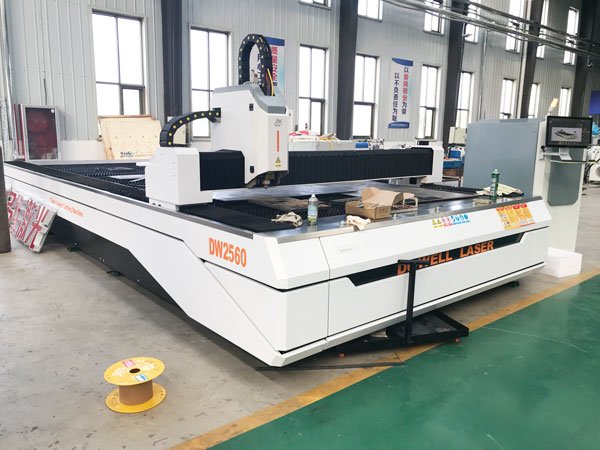With the rapid development of the industrial market, the industrial cnc laser cutter, as an indispensable machine for metal sheet cutting, has now become an indispensable machine for all factories. Many customers do not understand the mode of fiber laser cutter when purchasing cnc laser cutter steels. Cause some interference, this article tells you the cutting mode of the metal laser cutter.
There are four industrial cnc laser cutting process, vaporization cutting, melting cutting, oxidation melting cutting, and controlled fracture cutting. Now I will explain to you separately.

Vaporized cutting
Under the heating of the high-power density laser beam, the surface temperature of the material rises to the boiling point temperature very fast, enough to avoid melting caused by heat conduction, so part of the material vaporizes into steam and disappears, and part of the material is sprayed from the bottom of the slit by auxiliary gas The flow blows away.
Melt cutting
When the power density of the incident laser beam exceeds a certain value, the inside of the material at the point where the beam is irradiated begins to evaporate, forming holes. Once this small hole is formed, it will act as a black body to absorb all the incident beam energy.
The small hole is surrounded by the molten metal wall, and then the auxiliary airflow coaxial with the beam takes away the molten material around the hole. As the workpiece moves, the small hole moves synchronously in the cutting direction to form a slit. The laser beam continues to irradiate along the leading edge of this slit, and the molten material is continuously or pulsatingly blown away from the slit.
Oxidation melting cutting
Melting and cutting generally use inert gas. If it is replaced by oxygen or other active gases, the material is ignited under the irradiation of a laser beam, and a fierce chemical reaction with oxygen generates another heat source, which is called oxidative melting and cutting.
Control fracture cutting
For brittle materials that are easily damaged by heat, high-speed and controllable cutting is performed by laser beam heating, which is called controlled fracture cutting.

The main content of this cutting process is: the laser beam heats a small area of the brittle material, causing a large thermal gradient and severe mechanical deformation in this area, leading to the formation of cracks in the material. As long as a uniform heating gradient is maintained, the laser beam can guide cracks in any desired direction.
Types of industria cnc laser cutting machine
There are many brands in the laser cutting equipment market, and in these categories, they are divided according to the power:
- Low Power Laser Cutting Equipment
- Medium Power Laser Equipment
- High Power Laser Cutting Equipment
How much is industrial laser cutter cost
The industrial laser cutter cost depends on the thickness of the cutting plate, the power, the fiber laser, and the laser cutting bed are different, and the size is different, generally ranging from $20000-$200000.
